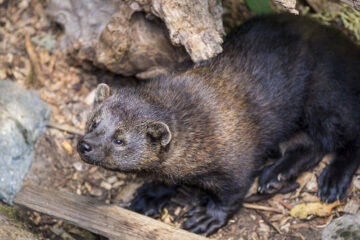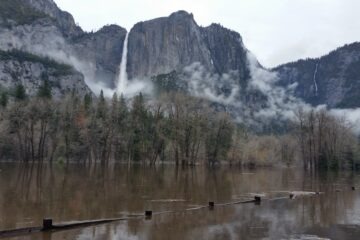On December 13, 2014, a Sierra Nevada red fox stepped through the snow in front of a motion-activated camera in the Yosemite Wilderness. The resulting image, which scientists identified while sorting through thousands of photos early the next year, confirmed the presence of the threatened species within the park for the first time in almost a century.
In the ensuing years, with support from our donors, a research team placed more cameras throughout the northern part of the park, where they clicked away, capturing images of bears, bobcats, birds and, yes, a few of the rare foxes (the image above was taken by a remote camera on Jan. 26, 2015).
Those images are helpful — and often inspiring — but can’t necessarily create a full picture of the wildlife that roam Yosemite’s remote north. To enhance their data collection by adding genetic material into the mix, researchers installed hair snares, which collect strands of fur from curious animals that wander close to the camera stations. The snares, like the cameras, work remotely, with teams traveling out to check and relocate the survey stations at regular intervals.
In September 2016, a researcher at University of California, Davis, led a training in Yosemite on another strategy for collecting scientifically useful organic samples. Our project coordinator, Ryan, joined the field researchers for the session, and captured some of the class on film:
Since that windy day in the park, trained surveyors have collectively hiked hundreds of miles through the wilderness searching for scat from foxes and other wildlife. They’ve collected dozens of samples, including at least one identified as belonging to a red fox.
Analyzing scat and other organic material can help scientists confirm the presence of specific animals in different locations, investigate the genetic makeup of different species, and, in the case of the Sierra Nevada red fox, learn more about the secretive population that lives in and around the park, including the extent to which it might have crossed paths with other, non-native foxes.
Scat survey season comes to a close before the snow starts blanketing the high country, but science pushes on, whatever the weather. Read more about Ryan’s fox-focused research adventures in our post about skiing for science!



